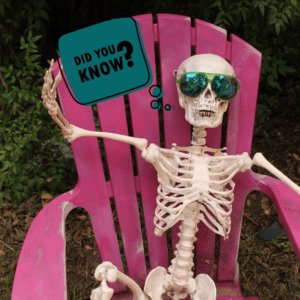In the pursuit of a healthy diet, there’s one little ingredient we can easily overlook… salt! 🧂
Here we discuss the reasons why it’s important to be mindful of your salt intake and how you can reduce this for a healthier diet.
Why is excess salt bad for you?
Too much salt can cause a lot of issues in the body. In particular, salt raises blood pressure 🩸, which can really increase your risk of heart disease and stroke.
It can be hard to know that you have high blood pressure – there are often no clear symptoms!
Regular health check-ups can help to monitor this, especially over the age of 40.
How much salt is too much?
Adults should eat no more than 6g of salt in a day (or 2.4g sodium). That’s around 1 teaspoon per day across all your food 🥄.
According to the NHS, children should consume salt according to their age:
· 1 to 3 years should eat no more than 2g salt a day (0.8g sodium)
· 4 to 6 years should eat no more than 3g salt a day (1.2g sodium)
· 7 to 10 years should eat no more than 5g salt a day (2g sodium)
· 11 years and over should eat no more than 6g salt a day (2.4g sodium)
It should be noted that babies cannot eat much salt as their kidneys are not fully developed. So do not add salt to any baby’s milk or food, and don’t use any stock cubes or gravy as these are very high in salt.
What’s the difference between salt and sodium?
Plenty of labels will only list the sodium content, not the salt. This can be confusing 🤔.
To convert sodium to salt, you should multiply the sodium amount by 2.5.
So, for 1g of sodium per 100g, that’s actually 2.5 grams of salt per 100g. Since adults should not eat any more than 6g of salt a day, and this equates to 2.4g of sodium.
How do I know how much salt my food contains?
Salt is in many of our food products – even if we haven’t added any salt ourselves! Check your labels in the foods you buy during your weekly shop 🛒. You’ll find the nutrition label on the back or side of the packaging.
Sometimes, salt is shown as a percentage of your daily recommended intake and may have a colour-coded nutrition label to show whether the salt content is low (green), medium (amber) or high (red) 🚦.
Only eat high-salt foods occasionally or in very small amounts and try to stick to foods in those green and amber categories.
What foods have a high salt content?
Here’s a list of foods that are generally very high in salt. To cut down on salt, eat these foods less often and try to have smaller amounts:
· Anchovies
· Bacon 🥓
· Cheese 🧀
· Gravy granules
· Ham
· Olives
· Pickles
· Prawns 🍤
· Salami
· Salted and dry-roasted nuts 🥜
· Salted fish 🐟
· Smoked meat and fish
· Soy sauce
· Stock cubes
· Yeast extract
Some foods you may not realise are high in salt (or which can have a very variable amount of salt, so are worth double-checking!) include:
– Bread products 🥯 like crumpets and bagels
– Pasta sauces 🍝
– Crisps 🍟
– Pizza 🍕
– Ready meals 🍲
– Pre-made soups 🍜
– Sandwiches 🥪
– Sausages 🌭
– Tomato ketchup, mayonnaise and other sauces 🍅
– Breakfast cereals 🥣
Also, if you regularly take dissolvable supplements or vitamins, or even painkillers, these can actually contain up to 1g of salt per tablet. You might want to change to a non-effervescent tablet if you’re trying to watch your salt intake.
How else can you add flavour and reduce salt intake?
There are lots of ways to get flavour into your food without adding salt 😛.
Firstly, it’s often just a habit to add salt when cooking. Try to start by thinking twice about whether you actually need to add salt to your meal – taste it first! Breaking this habit can be a good way to get started in reducing your salt intake.
Next, when you’re out shopping, think about doing the following:
– Compare the nutrition labels on everyday items. Choose one food per week that you check and swap for a lower salt option.
– Look for tinned items that do not have added salt. This could be vegetables or pulses which often come in low-salt varieties.
– Check your ready-made pasta sauces – tomato-based ones are often lower in salt than cheesy sauces, or those that contain olives, bacon or ham.
– Go for fresh fruit and vegetables instead of other snacks.
When you’re cooking, think about the following:
– Use pepper or other dried herbs instead of seasoning with salt
– Look for fresh herbs that you can add, or things like garlic, ginger, chilli and lime juice. All can add flavour without salt.
– Make your own stock at home instead of using granules.
– Bake or roast your vegetables to bring out their flavours – peppers, tomatoes, courgettes, parsnips and squash all do really well in the oven and come out tastier than in other methods of cooking.
– Make your own sauces using tomatoes and garlic.
For more information about your salt intake, check out the British Heart Foundation information online.
Make your food choices truly healthy by watching your salt intake. Setting up good habits now can help you in the long run and ensure you aren’t quietly overdoing this ingredient in an otherwise varied and healthy diet.






1 thought on “What’s the problem with Salt?”
A really helpful reminder, thanks